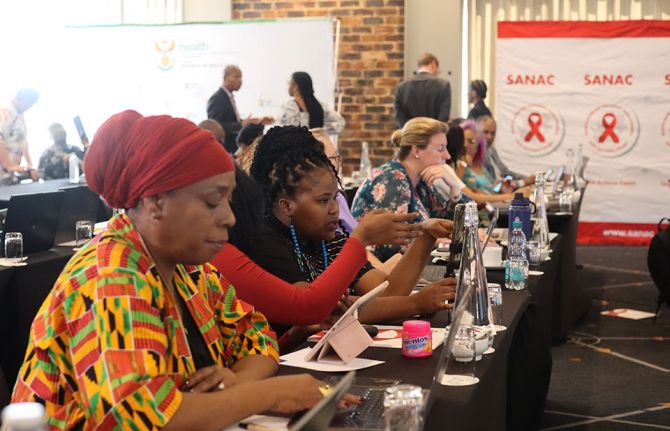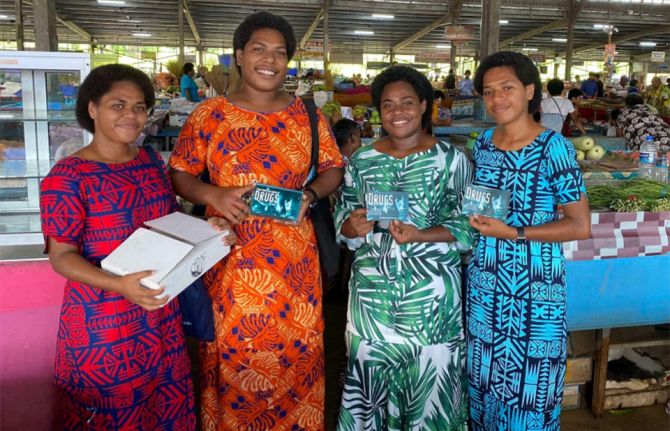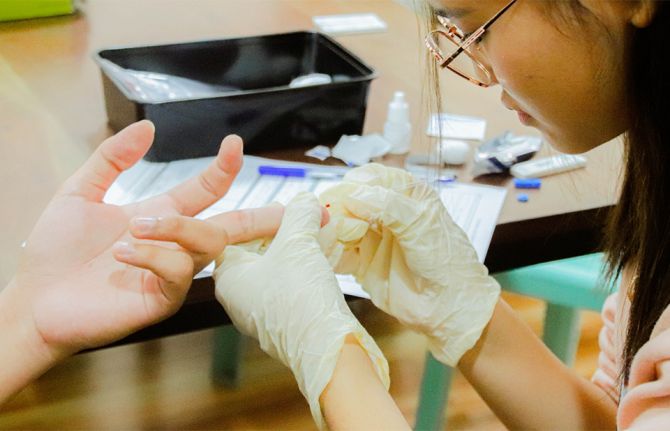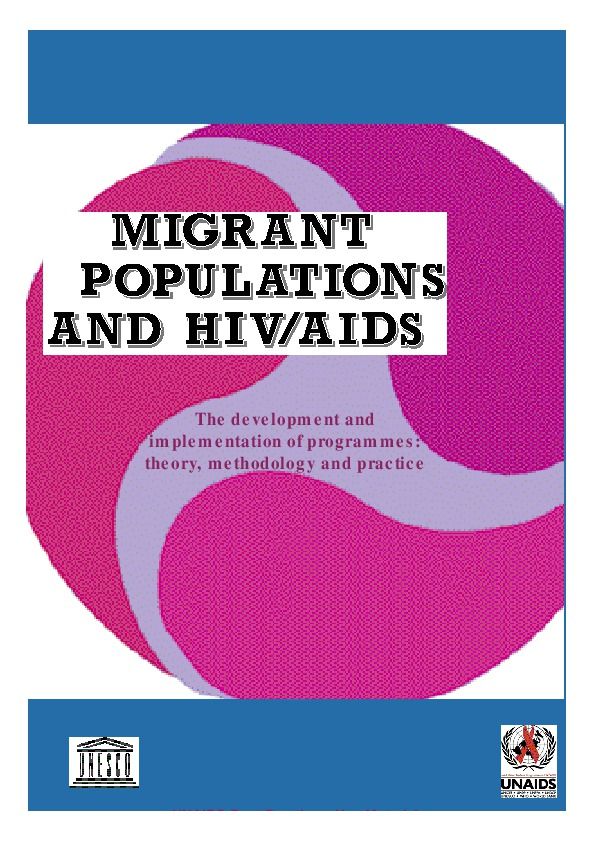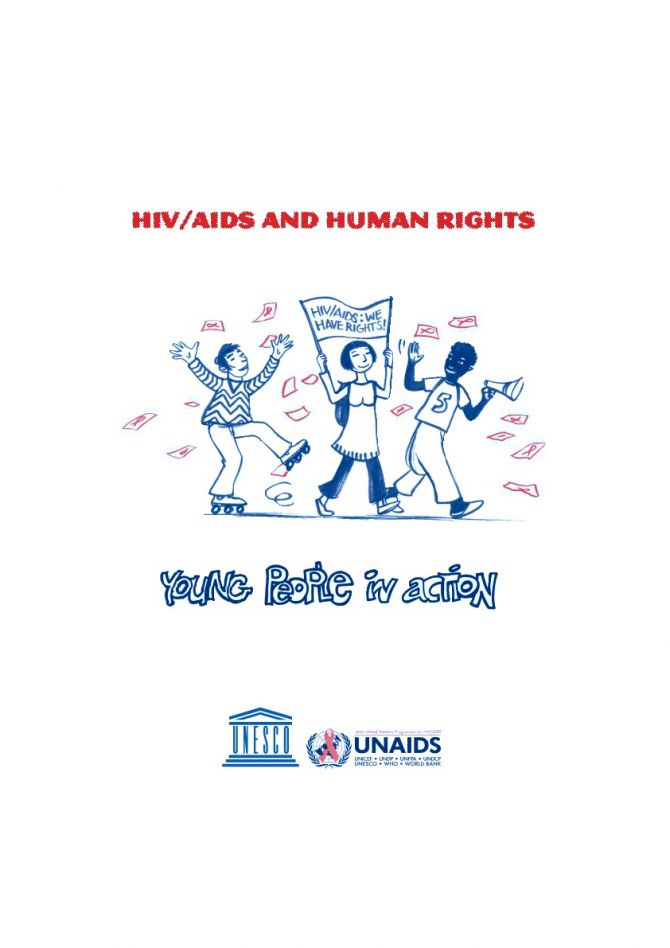
Feature Story
UNAIDS Committee of Cosponsoring Organizations meet
06 April 2009
06 April 2009 06 April 2009
(from left): Joy Phumaphi, Vice President and Head of the Human Development Network, World Bank; Arnauld Akodjenou, Director, Division of Operational Services, UNHCR; Josette Sheeran, Executive Director, WFP; Anarfi Asamoa-Baah, Deputy Director General, WHO; Assane Diop, Executive Director, Social Protection Sector, ILO; Koichiro Matsuura, Director General, UNESCO; Ad Melkert, Administrator ad-interim, UNDP; Ann M. Veneman, Executive Director, UNICEF; Michel Sidibé, Executive Director, UNAIDS; Thoraya Ahmed Obaid, Executive Director, UNFPA; Antonio Maria Costa, Executive Director, UNODC. Paris, 3 April 2009,
The Joint United Nations Programme on HIV/AIDS (UNAIDS) brings together the efforts and resources of ten UN system organizations in the AIDS response. The UNAIDS Committee of Cosponsoring Organizations (CCO) serves as the forum for these Cosponsors to meet on a regular basis to consider matters of major importance to UNAIDS, and to provide input from the Cosponsoring organizations into the policies and strategies of UNAIDS.
On 3 April 2009, the CCO held their first meeting since the appointment of UNAIDS Executive Director Michel Sidibé.
The CCO expressed their full support for “universal access” which Mr Sidibé has outlined as the top priority for UNAIDS as well as the other priority areas of focus which will be set out in the new UNAIDS outcome framework currently being finalized with Cosponsors.
The meeting provided an excellent opportunity to share ideas on supporting countries in achieving their universal access goals. The need for UNAIDS to advocate for an evidence informed AIDS response that is grounded in human rights was accepted by all. Equally important was the need for accountability and results.
The CCO also endorsed the general directions of the 2010-2011 Unified Budget and Workplan including the key priorities and the allocation of resources between the Cosponsors, the Secretariat and Interagency activities. The Secretariat will now work with the Global Coordinators of the Cosponsors to finalize the UBW for the June 2009 meeting of the Programme Coordinating Board.
UNAIDS Committee of Cosponsoring Organizations (CCO)
The CCO comprises representatives from the ten UNAIDS Cosponsors and the UNAIDS Secretariat. It meets twice a year and each Cosponsor rotates as chair of the committee annually, on 1 July.
Right Hand Side
Cosponsors:
Office of the United Nations High Commissioner for Refugees (UNHCR)
United Nations Children's Fund (UNICEF)
World Food Programme (WFP)
United Nations Development Programme (UNDP)
United Nations Population Fund (UNFPA)
United Nations Office on Drugs and Crime (UNODC)
International Labour Organization (ILO)
United Nations Educational, Scientific and Cultural Organization (UNESCO)
World Health Organization (WHO)
World Bank
Related
 Keeping up the momentum in the global AIDS response
Keeping up the momentum in the global AIDS response

24 April 2019
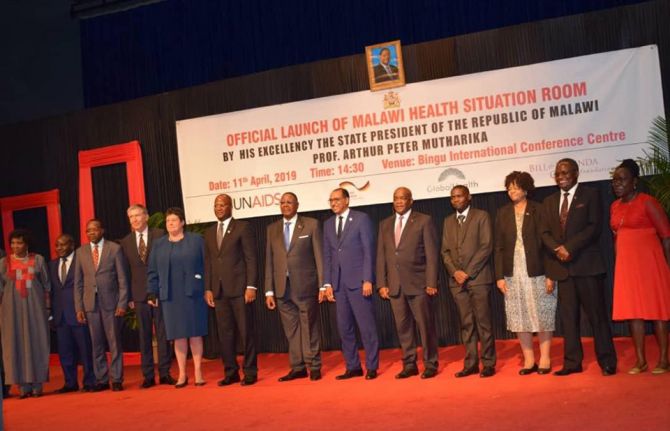 Malawi launches its health situation room
Malawi launches its health situation room

12 April 2019
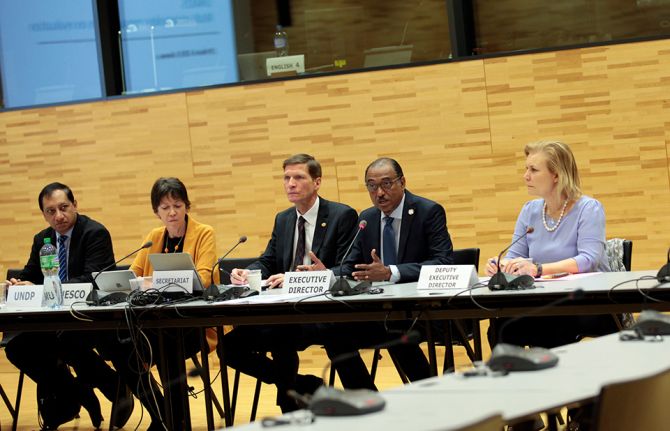 Learning lessons on evaluation
Learning lessons on evaluation

02 April 2019

Feature Story
‘Love and Relationships’: Film festival in Cambodia addresses HIV prevention
06 April 2009
06 April 2009 06 April 2009A version of this story was first published on UNESCO.org

‘The cinema road’ crosses Cambodian provinces. Credit: CCF
Last month audiences in selected Cambodian provinces had the chance to see the Khmer film Palace of Dreams as part of the ‘Love and Relationships’ film festival sponsored by UNESCO in cooperation with the French Cultural Centre (CCF). This drama, produced in 2008 by BBC World Service Trust, aims at reducing the risk of HIV infection transmission among young people.
Palace of Dreams is a powerful 90 minute feature about young people and their relationships. It aims to entertain and encourage the target audience to adopt behaviours that will reduce their risk of HIV infection and transmission. The drama was screened in 11 Cambodian provinces by the end of March.
Although HIV rates are on the decline in Cambodia, there is no room for complacency, especially for young people, as infection rates are highest among under 24-year-olds. Some specific groups are especially in need of HIV prevention information and are a particular focus within the film:
- out-of-school youth, including the 47% that work for a living, often far from home;
- young people in a relationship who say they trust their partner and do not use condoms;
- female entertainment workers;
- men who have sex with men, who have an HIV prevalence of 5.1%, which is more than five times higher than the national average.
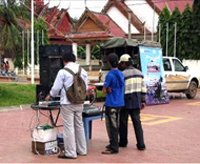
Installation of the equipment for the evening screening. Credit: UNESCO
Since March 2008 ‘The Cinema Road’ project (La Route du Cinema), organized by the French Cultural Centre, has shown, free of charge, several movies in 15 different provinces of Cambodia and has reached more than 30,000 viewers.
In November 2008 UNESCO’s office in Phnom Penh joined CCF in the ‘Love and Relationships’ programme, which aims to reach the maximum number of people in Cambodia and highlights challenges that the young face in intimate relationships. It focuses particularly on HIV prevention, sexuality and discrimination based on gender and/or sexual orientation; topics that formal education has been reluctant to address explicitly.
For this joint project, CCF selects French films (mostly comedies) translated into Khmer while UNESCO chooses films related to the above-mentioned subjects. Each month one movie from CCF and one from UNESCO are screened in a selected province.

Entire families attend an open-air screening. Credit: UNESCO
The screenings follow a set pattern. The CCF projectionist arrives in the province at noon and tours the town, announcing the event and inviting people to attend the show in the evening. A local NGO, responsible for distribution, organizes a prior sensitisation of the public and technical arrangements are made with the help of local people.
Entire families and groups of friends attend the open-air screening, which takes place in a workshop environment, accompanied by a facilitated discussion. When the film is finished the projectionist takes his camera and interviews young people from the audience, asking them questions related to the drama.
The project has been very well received by the public. The two movies that have drawn the greatest positive reaction are Palace of Dreams, being screened currently, and In the Dark, shown in November 2008.
Right Side Content
Cosponsors:
Partners:
French Cultural Centre, Cambodia (Centre Culturel Francais, Cambodge)
BBC World Service Trust
Feature stories:
Love in a Time of HIV (19 December 2008)
Powerful film brings AIDS issues to communities in Democratic Republic of Congo (16 June 2008)
Multimedia:
Publications:
Art for AIDS (pdf, 2.12 Mb)
UNAIDS Expert Consultation on Behaviour Change (pdf, 1.29 Mb)
Documents
HIV/AIDS and human rights : young people in action. A kit of ideas for youth organizations
01 July 2002
When and where misinformation, taboos, prejudice and fear regarding HIV/AIDS predominate, fundamental human rights are repeatedly abused and violated. Young people are often those most vulnerable and exposed. This kit shows that many young people are demonstrating their commitment to take up the challenge and reverse this situation successfully. It is intended to provide young people with information, motivation and inspiration to undertake the creative, daring and crucial action needed to make respect for human rights in the context of HIV/AIDS become a reality for all.

